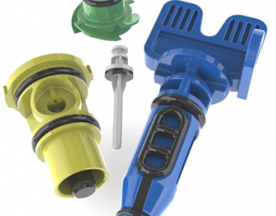Plastic Injection Molding
What is the key elements for precision plastic injection?

Precision plastic injection molding requires careful attention to detail and control over various factors to achieve tight tolerances, high-quality parts, and consistent repeatability. Here are the key elements for precision plastic injection molding:
-
Part Design Analysis: Conduct a thorough analysis of the part design to understand its critical features, tolerances, and functional requirements. Optimize the part design for manufacturability, considering factors such as wall thickness, draft angles, undercuts, and material selection.
-
Material Selection: Choose the appropriate thermoplastic material based on the part requirements, including mechanical properties, chemical resistance, and surface finish. Select high-quality resins with tight specifications and consistency to ensure uniform molding performance.
-
Tooling Design: Design the injection mold with precision to accommodate the part geometry and achieve tight tolerances. Consider factors such as gate type and location, runner design, cooling channels, and ejection system to optimize material flow, minimize cycle times, and ensure part quality.
-
Mold Temperature Control: Implement precise temperature control in the mold to optimize material flow, minimize warpage, and achieve consistent part dimensions. Use cooling channels and temperature controllers to maintain uniform mold temperatures throughout the molding process.
-
Injection Molding Machine: Utilize high-precision injection molding machines with advanced controls and monitoring systems to maintain precise process parameters. Ensure proper machine setup, including injection pressure, temperature, speed, and hold time, to achieve optimal part quality and repeatability.
-
Process Monitoring and Control: Implement real-time monitoring and control systems to track key process parameters, such as temperature, pressure, and injection speed. Use sensors and feedback mechanisms to detect and correct deviations from set parameters to maintain process stability and part quality.
-
Injection and Packing Pressure Control: Control injection and packing pressures during the molding process to ensure complete cavity filling and uniform part packing. Adjust pressure profiles based on part geometry, material properties, and molding conditions to minimize defects and optimize part quality.
-
Injection Speed and Time: Optimize injection speed and time to achieve uniform flow of molten plastic and prevent flow-induced defects, such as flow lines or burn marks. Adjust injection parameters based on part geometry, material viscosity, and mold temperature to achieve optimal part quality.
-
Cavity Venting: Ensure proper venting of the mold cavities to allow for the escape of air or gases during the injection process. Incorporate venting features or channels to prevent trapped air pockets, voids, or surface defects in the molded parts.
-
Quality Assurance and Inspection: Implement rigorous quality control measures and inspection procedures to verify part dimensions, surface finish, and material properties. Perform in-process and post-process inspections using precision measurement tools and testing equipment to ensure compliance with specifications.
By addressing these key elements in precision plastic injection molding, manufacturers can achieve consistent, high-quality parts with tight tolerances and meet the stringent requirements of demanding applications across various industries.
